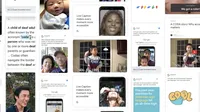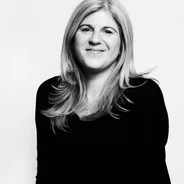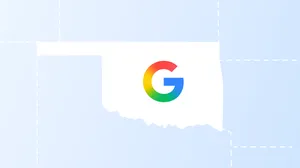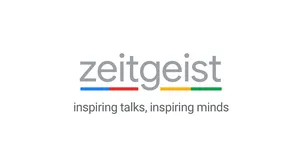Making our marketing, and Cannes, more accessible

Growing up as a child of deaf parents, Tony Lee, a designer on my team, says he always had one foot in the hearing world and one in the deaf world. When the pandemic separated Tony and his parents, they used Google's Live Transcribe app and Google Meet to communicate from afar and share important moments, like the birth of Tony’s son, who is the first grandchild on his side. This experience, which Tony shared in our commercial “A CODA Story,” touched people around the world. When we broaden the scope of our creative work, we truly see how powerful inclusive marketing can be.
People are exposed to around two million ads per year, but many say they don’t see themselves or their community accurately represented in them. Everybody deserves to feel a sense of belonging. As marketers, it’s our job to make sure the stories we tell are fully inclusive. This also means making our marketing accessible so that all disabled people, 15% of the global population, can fully access and engage with our content, products and experiences.
We want to give marketers, advertisers and all creatives the tools they need to make work that both resonates with people with disabilities and accurately represents the disabled community. That’s why today we are expanding our inclusive marketing toolkit All In to include new insights on accessible marketing. This in-depth playbook was created in partnership with disability inclusion experts, like Disability:IN and LaVant Consulting, and influential industry organizations like the American Association of Ad Agencies and Ad Council have endorsed it.
And what better place to introduce these insights than at the Cannes Lions International Festival of Creativity, where a key theme this year is representing the underrepresented in creative work. As the first official accessibility partner of Cannes Lions, we are working with Cannes to make sure the Festival itself is built for people with disabilities. This includes providing American Sign Language (ASL) interpreters and using Live Transcribe for real-time captioning. We’ll also make sure the Google Beach, our home base at Cannes, is wheelchair accessible and provides CART captioning, Live Transcribe on Google Pixels for real-time captioning and ASL interpreters so all of Google’s programming meets best practices for accessibility.
When we launched All In last year, our goal was to rally the industry to tap into our collective responsibility to create work where everyone feels seen. In that time, we have expanded our partnerships to include a wider breadth of experiences, including releasing the industry’s first in-depth research on plus-size inclusion in partnership with the National Association to Advance Fat Acceptance.
With the continued support of our partners to implement these insights, we are seeing meaningful improvement. For example, our annual audit of Google's consumer marketing creative found that our top campaigns in the U.S. in 2021 provided more prominent speaking roles for women and exceeded our goals for better representing members of Asian, Black and Latino/Latinx communities.
2021 Key Insight: Most Asian people in our ads are perceived to be East Asian, so we have work to do to include all Asian communities.
2021 Key Insight: Black representation is consistently thoughtful, expanding beyond stereotypical portrayals of dancing, music and sports.
2021 Key Insight: We need to prioritize more prominent and thoughtful portrayals of Indigenous people to reach U.S. population demographic levels.
2021 Key Insight: While we still need more Latino/Latinx representation, we've dramatically decreased the presence of key stereotypes in our work featuring these communities.
2021 Key Insight: More than 3/4 of portrayals convey LGBTQ+ representation without relying on Pride symbols.
2021 Key Insight: While we still tend to over-index on portrayals of people who use wheelchairs, we have dramatically decreased the presence of other disability stereotypes in our work.
2021 Key Insight: Over 67% of our ads include women and nearly all of them avoid key stereotypes.
We’ve also made progress in how we represent people with disabilities in our ads, but still have a ways to go. In 2021, disabled people were represented in 5.6% of our ads, a 5x increase from the previous year. We also dramatically reduced disability stereotypes in our work by completely eliminating depictions of people with disabilities as dependent on others or as friends only with other people with disabilities, and we avoided inspirational tropes in 96% of those ads. But we know it’s not enough to simply build creative that authentically features people with disabilities and their intersectional identities, we need to make sure that all disabled people can access that creative. That’s why we’re equally focused on applying the latest accessible marketing best practices, now shared on All In.
We’ll continue to take steps forward. Next up, we’ll expand All In globally, rolling out audience insights in more countries later this year. We also plan to partner with brands across a number of industries to invest in inclusive marketing initiatives across the globe and share our collective learnings with the broader creative field.
More than 20 years ago, Google started with an ambitious goal to organize the world’s information and make it universally accessible and useful. We can only accomplish our mission when everyone can see themselves reflected in what we do. Our commitment to ending harmful stereotypes, portraying underrepresented communities and addressing inequality in advertising is not only our responsibility, it’s also our motivation and guiding principle. We’re encouraged to see so many others on this inclusive marketing journey with us and look forward to sharing ideas and learnings this week at Cannes and in the future.







